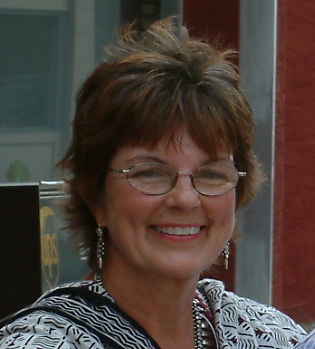 |
| Robert #1 • 10-1/2" x 8" • Oil on unstretched canvas |
My Monday evenings have improved with the addition of an evening session of model painting. This was the first week's painting. The model's name is, of course, Robert, and as it happens, I knew him. Last year, I took a figure drawing class at a church in Gahanna with a wonderful artist and teacher named Dennis Drummond. Some of you may have studied with him at CCAD; I never did. But, we had Robert as one of our models. I liked him then, and and my opinion hasn't changed since then.
I like is his face, strong and interesting, with a nice cleft chin. He looks a bit rougher in person, but if you work on him, you can get him to smile a little. And, just in case this is important to you, he passes out dark chocolate to the artists on his breaks.
 |
| He looks different without all that blue tape. |
It had been a very long time since I'd worked from a model, and it took me a while to settle into this painting. Working on one of my favorite surfaces, an unstretched canvas taped to a gatorboard, I began with a tone of transparent oxide red, thinned down with OMS and wiped to a light value. You can get a similar peachy tone with Burnt Sienna, which it is also nice for landscape painting. Next, I added some lines, and when I was satisfied with the placement and a loose drawing, I started with the darks and shadows.
 |
| I think he looks pretty good as a square. |
The darks weren't as dark as I'd have liked in reality, but I scrubbed in a semi-transparent tone wherever I saw shadow. Later I applied actual color over that. On the light side of the face, there are several places where the toned canvas shows through the paint and animates the surface.
The room itself has two sources of artificial light, plus curtains over windows for a third source, and then there is a spotlight on the model, which surprisingly does give a strong enough light and shadow - especially if you remember to squint. But, as the evening progresses, the light changes quite a bit in the room.
A friend had warned me that on one side of the room, the light was yellow. I didn't notice it. I use a clip-on Mighty Brite light that I purchased for $14.00 at my local Barnes and Noble. All the colors I normally use were on my palette: cad lemon yellow, cad light, cad red light, quinacridone red, ultramarine lbue and thalo blue; but, I used grays instead of the blues, and no quinacridone or lemon yellow. I decided to try an 'alien color', something I'd received as a sample at last year's Plein Air Convention or in the Adirondacks, not sure which. It was made by Williamsburg and called Alizarine Orange: very transparent, with a high tinting power.
The room itself has two sources of artificial light, plus curtains over windows for a third source, and then there is a spotlight on the model, which surprisingly does give a strong enough light and shadow - especially if you remember to squint. But, as the evening progresses, the light changes quite a bit in the room.
A friend had warned me that on one side of the room, the light was yellow. I didn't notice it. I use a clip-on Mighty Brite light that I purchased for $14.00 at my local Barnes and Noble. All the colors I normally use were on my palette: cad lemon yellow, cad light, cad red light, quinacridone red, ultramarine lbue and thalo blue; but, I used grays instead of the blues, and no quinacridone or lemon yellow. I decided to try an 'alien color', something I'd received as a sample at last year's Plein Air Convention or in the Adirondacks, not sure which. It was made by Williamsburg and called Alizarine Orange: very transparent, with a high tinting power.
At the end of the evening, I wasn't totally dissatisfied with my painting. The thing that bothered me most was that I didn't get Robert's chin correct. I love a man with a Cary Grant chin, but Robert's is stronger than what I have captured. Still, I decided that it wasn't bad for the length of time that I'd been away from painting a face from life.
 |
| Detail of Robert's ear and pony tail. Look at how cool that little spot of gray is in a sea of warm color! |
Hint: if an artist offers you free paint, take it! See what you can do with it.





No comments:
Post a Comment